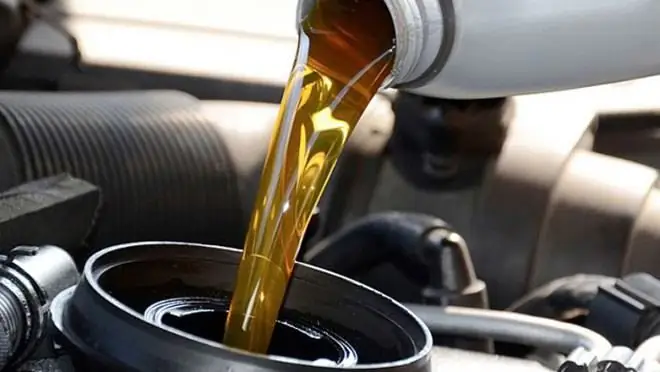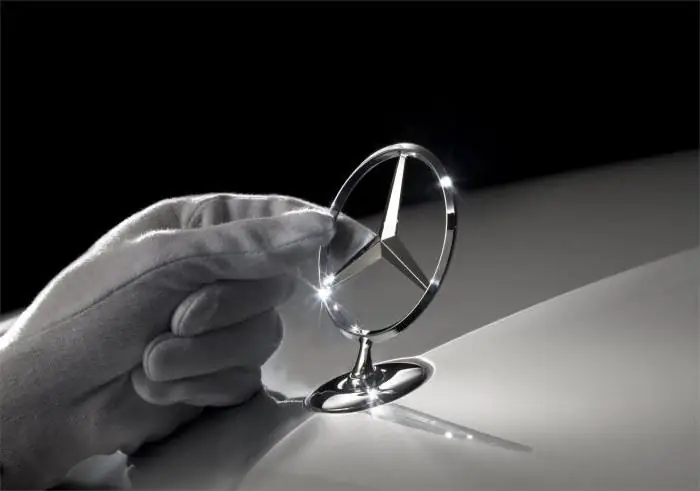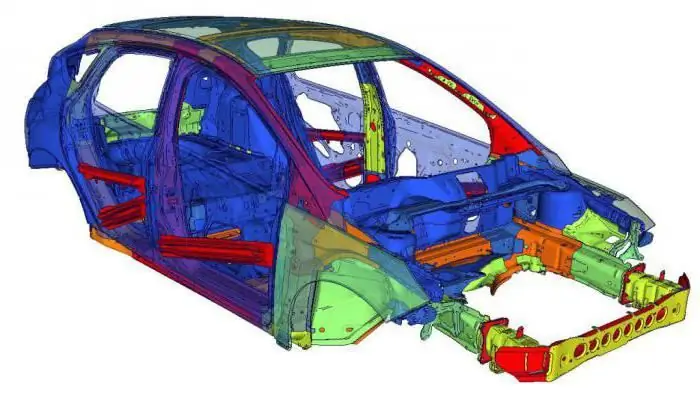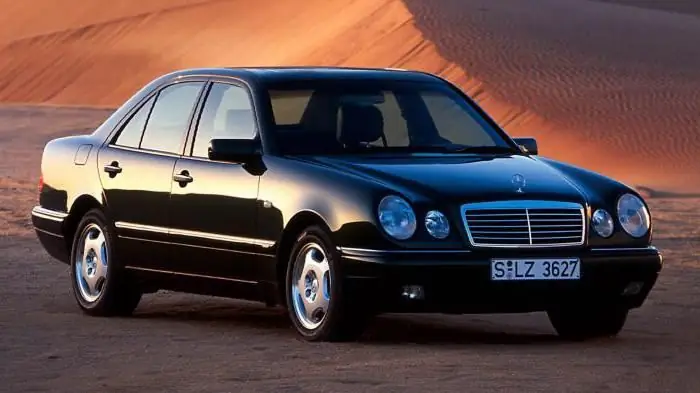2025 Author: Erin Ralphs | [email protected]. Last modified: 2025-01-22 21:14:12
Gazelle is perhaps the most famous light truck in Russia. Everyone knows and saw this car. The car has been mass-produced since the 94th year. At that time, few people could have imagined that this truck would completely oust such masters as GAZon and Zil Bychok from the market. Now there are a lot of modifications of gazelles that are used in everyday life, household and industry. Today we will consider one of the most popular version. This is an onboard gazelle. Photos, characteristics and much more - further in our article.
Appearance
Many people know that the car was built on the basis of the domestic Volga. This can be seen not only in the identical engines, but also in the body.

The first gazelle received the same rectangular optics and black grille as the Volga of the 90s. The appearance of the car is not the most presentable, but the purpose of the gazelle is a bit different.
In 2003 there weredrastic changes. So, GAZovtsy changed the shape of the cabin and interior (we will return to the latter a little later). The shape of the sides has also changed. But for some reason, not everyone was happy with such changes. New boards rotted very quickly due to the thin metal and the complete lack of anti-corrosion treatment.

The floor was still wooden. As the owners say, the boards in the open area also quickly rotted. Therefore, now all gazelles older than ten years have already home-made floors and sides, also welded with their own hands.
If we talk about the cabin, outwardly it does not seem as old as on the first gazelle. And as for rust, the hood was often covered with corrosion. The bumper on the new onboard gazelle has become more durable. The headlights, depending on the version, were glass or plastic. The latter quickly became cloudy. And polishing them was only a temporary solution. Therefore, many owners simply bought new headlights, with a glass cover.
Salon
The first airborne gazelles had a simple and nondescript interior with a square instrument panel and a huge steering wheel. The same was used on the GAZ-3307.

The steering wheel on the truck was very heavy, so parking and other maneuvers in tight terrain required considerable effort. In order to somehow make the steering wheel softer, it was necessary to inject the pivots every six months.
In 2003, the interior design has changed, but many of the "sores" remained the same. So, inside you can find all the same “tractor” steering wheel, flat andshapeless seats, as well as a long gearshift lever. Only on the latest Next models of 2018 was it moved forward to the front panel. With the release of on-board gazelles "Business", drivers received a power steering. It made driving much easier with it.

The weak point of the gazelle is the stove. It starts to flow very soon and does not work well. This is due to wear on the pipes, as well as contamination of the interior heater radiator itself. The faucet of the stove also fails. The cable drives for controlling the dampers break. As a result, the stove only blows in one direction.
Gazelle onboard: body dimensions, load capacity
According to passport data, the curb weight of the car was 1850 kilograms. But, as practice shows, the real figure is much higher. An empty onboard gazelle (especially an elongated version) weighs from 2.2 tons. The carrying capacity in all cases is one and a half tons. As for body dimensions, the first models came with a three-meter cargo area. The width of the platform was a little less than two meters. Models younger than 2004 already came with an extended base. So, the dimensions of the platform were 4 by 1.95 meters. Side bodies on the gazelle had different lengths. There are rare specimens where the owners extended the platform up to seven meters. Naturally, the wheelbase also increased.
Specifications
Initially, an engine from the Zavolzhsky Motor Plant was installed on the onboard gazelle. It was ZMZ-402. The motor with a volume of 2.3 liters developed a power of 90 horsepower. This engine is carbureted, with a timing chain drive and an eight-valve head. The motor had a small resource of 200 thousand kilometers. At the same time, the carburetor constantly failed, and the oil seals also wore out.

In 2003, the characteristics of the airborne gazelle have changed slightly. So, under the hood of the updated model, you can see the 406th engine from the same Zavolzhsky Motor Plant. This unit had a modern 16-valve head, but was still carbureted. The configuration of the piston, intake and exhaust systems has changed. As a result, with a volume of 2.4 liters, the engine began to develop 130 horsepower. Basically, such engines were installed on on-board gazelles from 2003 to 2006 inclusive.

The 405th ZMZ motor became the most powerful in the line. This engine has already received a modern injection injection. At the same time, its volume increased to 2.5 liters. All this gave a good increase in power. So, the 405th motor developed up to 150 forces at 4 thousand revolutions.
Fuel consumption
Like the Volga, the gazelle is a very voracious car. The onboard gazelle, by the way, is one of the most economical modifications, due to the low windage. Since almost all models are now equipped with LPG propane-butane, we will talk about gas consumption. With the 402nd engine, the car spends about 20 liters per hundred in mixed mode. On the 406th engine, the car is more economical, but the consumption decreases slightly. On average, the car spends 19 liters of gas. As for the 405th motor, with skillful tuningHBO, he consumed from 16 to 18 liters of gas per hundred.
Transmission
A classic five-speed box from the Volga was installed on all modifications without exception. What do the owners say about it? The box is quite hardy, but only if the machine is not overloaded. But since gazelles often carry two or more tons of cargo, the transmission does not stand up. First of all, the clutch suffers (disk, release bearing, basket). Synchronizers fail, and the transmissions themselves begin to “howl”.
In terms of maintenance, the box is unpretentious. It is only necessary to control the oil level (since it can leak due to old oil seals) and change it every 60 thousand kilometers. Recommended viscosity - 75W90.
Chassis
The car has a frame structure with dependent suspension. In front there is a beam on semi-elliptical springs. The design is very reliable, but requires periodic maintenance. Over time, the front springs sag. They need to be rolled, and sometimes additionally strengthened. Also, the beam needs lubrication of the pivots. As we said earlier, this should be done twice a year. Behind is an axle with springs and a sprung box.

Shock absorbers are the same as on the 53rd Lawn. Some versions were equipped with an anti-roll bar. But it works inefficiently. In corners, the car rolls a lot, especially if the suspension is not reinforced in front. The rear suspension requires almost no attention. Periodically, it is necessary to change the pillows of the springs, as well as silent blocksearrings. The oil on the rear axle should be changed every 40,000 kilometers.
Steering, brakes
Steering gear - geared. Most new versions have hydraulic booster. Brakes with hydraulic drive. Front - disc, ventilated. Behind - drums. When the car is empty, the brakes are enough. But as soon as one and a half tons of cargo is behind, you need to significantly increase the distance.
Conclusion
So, we found out what an airborne gazelle is. The car is ideal for city work. But he is not without flaws. This is an uncomfortable interior, as well as a small resource of spare parts. The machine requires regular maintenance, and older models also require welding. Only with frequent maintenance, the car will not break down and bring profit to the owner.
Recommended:
Capacity of the onboard "Gazelle": specifications

Capacity of the onboard "Gazelle": description, modifications, pros and cons, design features, photos. Airborne "Gazelle": technical characteristics, operation, purpose, user reviews. What is the carrying capacity of the Gazelle 3 and 4.2 meters?
Automotive oils 5W30: rating, characteristics, classification, declared qualities, advantages and disadvantages, reviews of specialists and car owners

Every car owner knows how important it is to choose the right engine oil. Not only the stable operation of the iron “heart” of the car depends on this, but also the resource of its operation. High-quality oil protects mechanisms from various adverse effects. One of the most popular types of lubricants in our country is oil with a viscosity index of 5W30. It can be called universal. The 5W30 oil rating will be discussed in the article
Badges of car brands and names. German, American and Chinese car brands and their badges

Badges of brands of cars - how diverse they are! With and without a name, intricate and simple, multi-color and plain … And all are very original and interesting. So, since German, American and Asian cars are the most common and in demand, then using the example of their best cars, the topic of the origin of emblems and names will be revealed
Car: how it works, the principle of operation, characteristics and schemes. How does a car muffler work?

Since the creation of the first gasoline-powered car, which happened more than a hundred years ago, nothing has changed in its main parts. The design has been modernized and improved. However, the car, as it was arranged, remained as such. Consider its general design and arrangement of some individual components and assemblies
Car Mercedes W210: characteristics, description and reviews. Overview of the car Mercedes-Benz W210

Car Mercedes W210 - this is perhaps one of the most interesting models of "Mercedes". And this is not just the opinion of some. This model received one of the most prestigious awards for the development of such a design and the embodiment of a new word in it. But not only the exterior of this car deserves attention. Well, it’s worth talking more about this car and listing its strongest points

